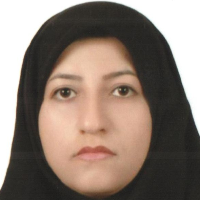Presenting Culture - Orientation Model Based on Islamic Doctrine and Instruction in Education Organization of Iran
Author(s):
Abstract:
The purpose of the current study is to present the model of customer orientation culture which is in accordance with the Islamic doctrine and instruction in Education Organization of the country. The method of study is mixed-exploratory carried out in the academic year 2015- 2016. First, themes of customer-oriented culture in Education Organization were identified by making use of inductive thematic analysis. Base on the whole field of research, containing 51 items listed in databases since 2000 to 2015, 608 themes were identified. Then, according to Islamic doctrine and instruction and by making use of thematic analyzing and studying Hole Quran exegesis and Nahj-ol-balaghe, the themes of customer-orientation culture were identified. In both steps, Holsti's method was used in order to investigate the reliability. As a result, two categories of main themes, including 73 basic and fundamental themes and 15 organizing themes as following: 1.Organizing strategy with comprehensive themes: strategic standpoint to clients, creating a corporate knowledge, improving customer service, staff recruitment criteria, requesting for appropriate work, discipline centering, justness, righteousness, management attitude, adopting appropriate practices and handling of complaints. 2. Client satisfaction strategy with comprehensive themes: valuing customer, building trust in customers, paying attention to ethical issues, promoting and persuading people, learning skills, improving services and tangible factors. In the follow, according to identified themes, a questionnaire was designed with 210 items (tests) in order to control the validity of the study by making use of Cronbach Alpha, proving validity of 0.89. The research society was 30156 people in the quantitative sector, including all school principals from five provinces East Azerbaijan, Bushehr, Tehran, Khorasan Razavi, and Fars. Random method was used for sampling which finally 379 were selected. Factor analysis was used to validate the model where all themes were verified with high load-factor.
Keywords:
Language:
Persian
Published:
Journal of New Approaches in Educational Administration, Volume:8 Issue: 2, 2017
Pages:
31 to 54
magiran.com/p1731558
دانلود و مطالعه متن این مقاله با یکی از روشهای زیر امکان پذیر است:
اشتراک شخصی
با عضویت و پرداخت آنلاین حق اشتراک یکساله به مبلغ 1,390,000ريال میتوانید 70 عنوان مطلب دانلود کنید!
اشتراک سازمانی
به کتابخانه دانشگاه یا محل کار خود پیشنهاد کنید تا اشتراک سازمانی این پایگاه را برای دسترسی نامحدود همه کاربران به متن مطالب تهیه نمایند!
توجه!
- حق عضویت دریافتی صرف حمایت از نشریات عضو و نگهداری، تکمیل و توسعه مگیران میشود.
- پرداخت حق اشتراک و دانلود مقالات اجازه بازنشر آن در سایر رسانههای چاپی و دیجیتال را به کاربر نمیدهد.
In order to view content subscription is required
Personal subscription
Subscribe magiran.com for 70 € euros via PayPal and download 70 articles during a year.
Organization subscription
Please contact us to subscribe your university or library for unlimited access!


